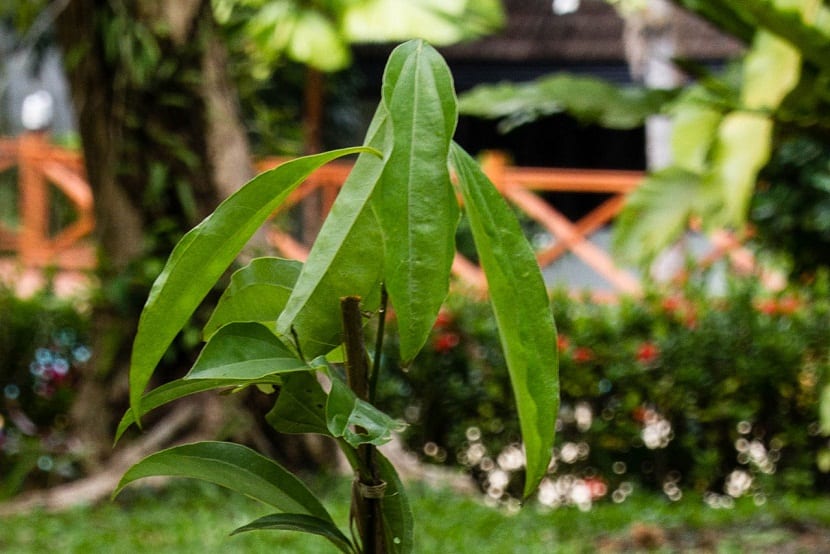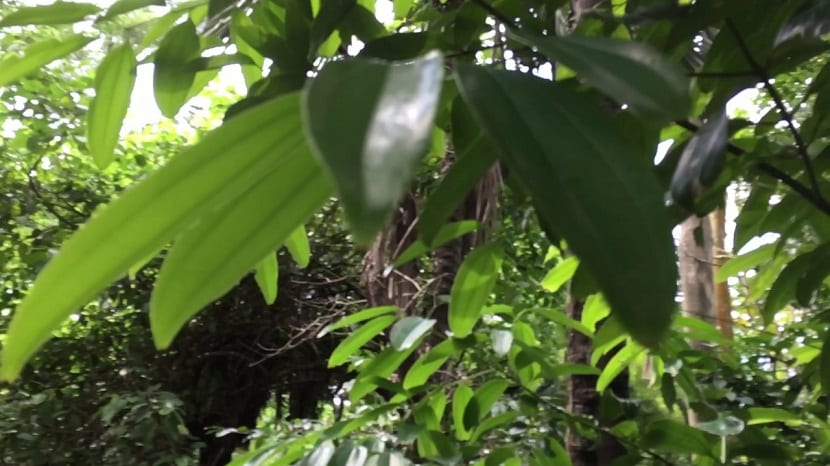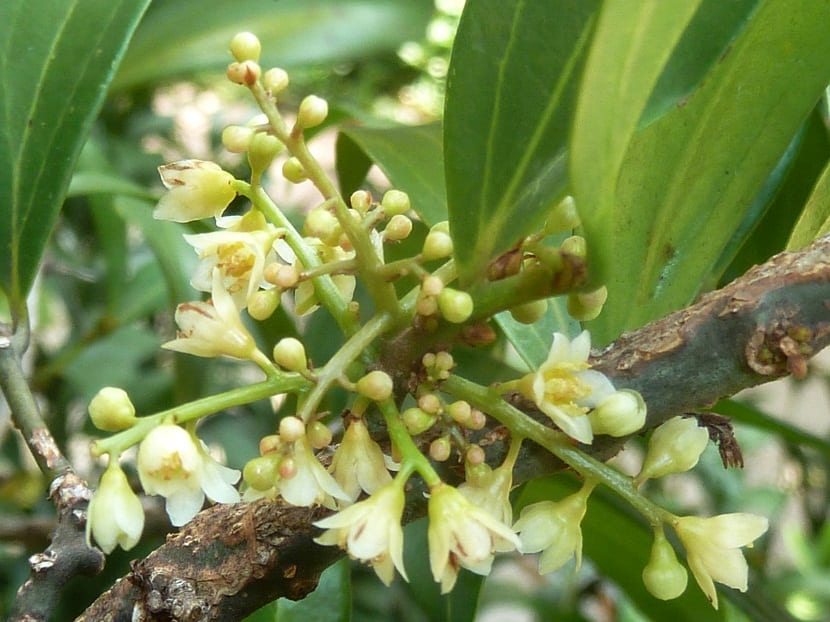
The Cinnamomum Cassia is an evergreen tree native to Indochina, eastern Burma and southern China; which because it is really similar to cinnamon (Cinnamomum zeylanicum), is often used largely not only as a spice, but also as an aromatic condiment.
Features

The Cinnamomum Cassia tree is a small evergreen shrub It has papery bark and grows around 10 meters high when found in its wild state, although it is usually pruned in the case of denser and smaller trees, in order to facilitate its cultivation.
Its branches usually grow upright and are covered by multiple bright green leaves with reddish nerves. It has evergreen practically opposite, which, in addition to having three prominent veins, are long, leathery, simple and aromatic. It has panicle, conspicuous and hermaphroditic flowers.
Care
This tree does not require extensive care, however must receive a watering frecuente, which should be carried out approximately every two or three days throughout the summer and, around every four and six during the remainder of the year.
Similarly, the use of liquid organic fertilizers is recommended, such as: humus or guano. With these indications, the Cinnamomum Cassia will be able to develop without problems having everything it needs.
Farming
The earliest to collect Cinnamomum Cassia is usually after eight years of planting the tree.
It is usually collected about once every decade to every 15 years. Being a small plant, it will be possible to get around five kilos of dried cinnamon, which is cut directly from the bark and rolled to create the traditional cinnamon sticks.
In the same way as bamboo, that of Cinnamomum Cassia is usually a naturally sustainable cultivation, which means that they are plants that develop naturally, so when cutting a branch, it will grow again in a short time.
If you plant 4.000 in a field, it is possible to obtain around 45 or 68 kg of cinnamon. In order to obtain a good harvest, it is necessary that its sprouts be pruned de continuous and close to the ground, allowing the tree to look like a low, dense shrub with thick, thin branches.
It is worth mentioning that the quality of the harvested cinnamon increases with pruning successiveSince having a much thinner bark, thinner shoots can be obtained that come directly from the center of the plant.
Plagues and diseases
Within insect pests that most frequently affect Cinnamomum CassiaThe Chilasa clytia Lankeswara butterfly and the leafminer Conopomorpha civica are found both from India.
Similarly, Eriophyes boisi and Trioza cinnamomi are other pests that most frequently attack this tree. Each of them is caused by the presence of butterflies, lice, larvae, mites and worms, and they usually become evident by causing the appearance of galls on leaves.
The leaves of the Cinnamomun Cassia are affected by diseases that cause the appearance of small orange, yellow and / or brown spots, in addition to causing the blackening of the leaves.

Depending on the color, it will be possible to establish the kind of fungus that has caused the disease, within which are normally found: Pestalotia cinnamonmi, Cephaleuros virescens, Colletotrichum gloeosporioides and Stenalla spp.
Likewise, both the stem and the root of this tree can present diseases. In the case of rough bark disease, brown or black spots appear not only around the bark, but also on the stem of Cinnamomum Cassia, which, when not treated in time, end up becoming huge spots that significantly affect the the health of the tree.
In the case of seeing vertical stripes around the stem, it is very possible that the disease is caused by the presence of a fungus called Phytophthora cinnamomi, which is popularly known as canker stripe.
Similarly, another disease that can affect this type of tree is Phellinus lamanesis Murr, which causes root rot.